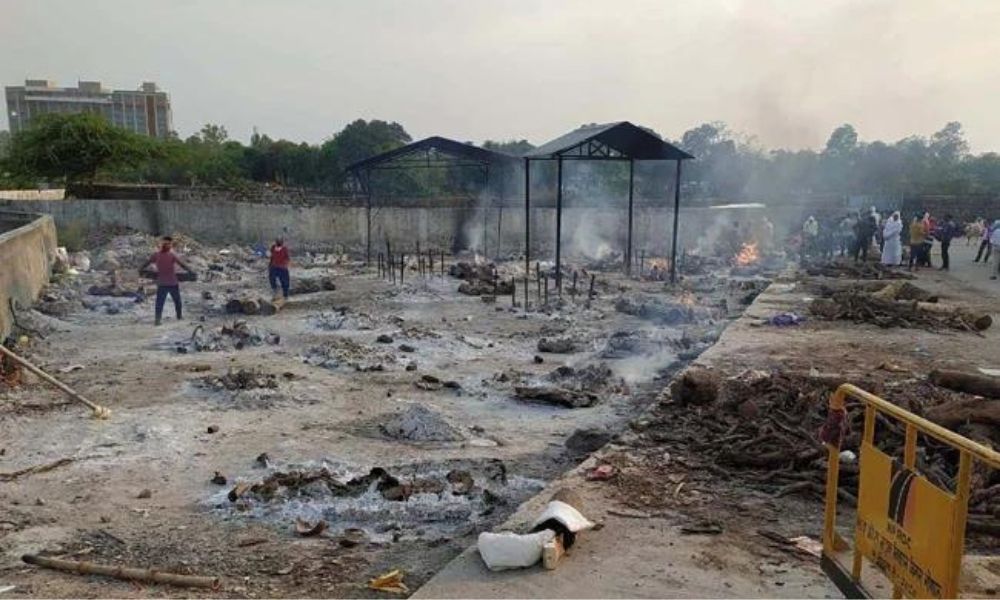
Image Credits: NDTV
'Use Agri Waste For Cremation': Research Institute Ideates 'Green Crematorium' Amid Spiking COVID-19 Deaths
Writer: Shubhendu Deshmukh
Shubhendu, the quint essential news junky, the man who loves science and politics in equal measure and offers the complete contrast to it by being a fan of urdu poetry as well.
Maharashtra, 10 May 2021 12:16 PM GMT
Editor : Rakshitha R |
Rakshitha an engineer turned passionate journalist with an inclination for poetry, creative writing, movies, fiction, mountains and seclusion. Not a part of the social process but existential.
Creatives : Shubhendu Deshmukh
Shubhendu, the quint essential news junky, the man who loves science and politics in equal measure and offers the complete contrast to it by being a fan of urdu poetry as well.
In India, the agricultural waste that is generated after the crops are harvested is usually burnt. Instead of burning, if this biomass is used for conducting the last rites of the deceased, it can reduce pollution, according to the Indian Council of Agricultural Research.
One of the most trusted and respected newspapers in the United States, The New York Times, on April 25th, published a photo of COVID-19 victims' funeral in east Delhi wherein a large number of cremations are taking place. The infamous photo not only highlighted the extent of the devastation caused by the second wave of the pandemic in India but also captured the spillover effect of the surge in COVID-19 deaths on the environment.
Every year nearly 75 lakh people die in India, and 1.5 to two crore trees are cut for conducting their last rites. To reduce the tree felling, the Indian Council of Agricultural Research's Central Institute for Research on Cotton Technology (CIRCOT) in Mumbai has come up with the idea of 'Green Crematorium' through which the environmental damage and cost of cremation can be reduced.
In India, the agricultural waste that is generated after the crops are harvested is usually burnt. Instead of burning, if this biomass is used for conducting the last rites of the deceased, it can reduce pollution, according to ICAR.
About 300 Kg of wood is required for a funeral when a person dies. The cost of just the wood comes to around ₹5000, but more than that, at least three trees are also cut, reported Loksatta.
ICAR-CIRCOT has come up with the concept to collect weeds and other wastage from the field after harvest and use them for conducting the last rites. For this, the waste biomass can be purchased from the farmers who usually incinerate it.
If this option is adopted, the cost of cremation might be reduced, tree felling can be stopped, and it could also provide some income to the farmers.
The institute has also developed cremation rooms that are equipped with blowers. The rooms can be reused after six to eight hours, unlike cremations using wooden logs that require at least 10 to 12 hours to burn out completely.
The ICAR would soon be making logs from dung and farm weeds. Funeral through such means would cost around ₹2000. With the surge in deaths amid the second wave of the pandemic, a green crematorium can not only cut the cost of funerals but also prevent damage to the environment.
Also Read: As Bodies Pile Up In Crematoriums, Madhya Pradesh Official Data On COVID Deaths Look Suspicious
 All section
All section














